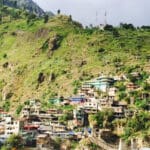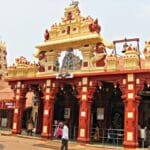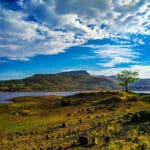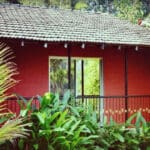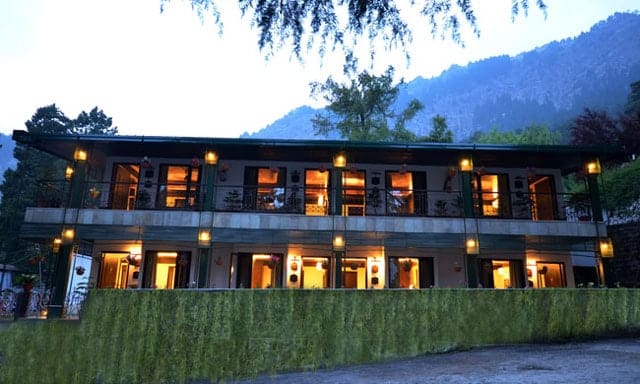Nestled at the foothills of the Chamundi Hills in Mysore, Karanji Lake is a tranquil retreat that seamlessly blends natural beauty with recreational opportunities. Spanning over 90 acres, this picturesque lake is not just a haven for birdwatchers and nature enthusiasts but also a popular spot for families, joggers, and photographers. Surrounded by lush greenery, walking trails, and a butterfly park, Karanji Lake offers a refreshing escape from the hustle and bustle of city life. In this article, we will explore the lake’s history, its ecological significance, key attractions, activities, and practical tips for visitors.
History and Ecological Significance of Karanji Lake
Origins and Restoration
Karanji Lake has been a part of Mysore’s landscape for centuries, serving as a vital water source for irrigation and local communities. Historically, it was one of the many lakes created during the reign of the Wodeyar dynasty to meet the water needs of the growing city. Over time, however, urbanization and neglect took their toll on the lake. Encroachments, pollution, and siltation reduced its water-holding capacity and degraded its ecosystem.
Recognizing its ecological and cultural importance, concerted efforts were made to restore Karanji Lake in the early 2000s. The Mysore Zoo Authority , in collaboration with environmental organizations and government bodies, undertook a comprehensive restoration project. This included desilting the lake bed, creating artificial islands to support avian life, planting native trees, and developing wetlands to enhance biodiversity. Today, Karanji Lake stands as a shining example of successful ecological rehabilitation and sustainable management.

Biodiversity Hotspot
Karanji Lake is now a thriving ecosystem that supports an impressive variety of flora and fauna. It serves as a critical habitat for both resident and migratory birds, making it a paradise for ornithologists and wildlife enthusiasts. Over 150 species of birds have been recorded here, including painted storks, open-billed storks, pelicans, herons, egrets, kingfishers, and cormorants. During the winter months, migratory birds from Siberia, Europe, and Central Asia flock to the lake, adding vibrancy and diversity to its avian population.
The lake’s wetlands are teeming with aquatic life, including several species of fish, frogs, turtles, and even monitor lizards. These creatures play a crucial role in maintaining the ecological balance of the area. Additionally, the surrounding vegetation—comprising native trees like banyans, peepals, and neem—provides shelter and food for insects, reptiles, and small mammals.
One of the most fascinating aspects of Karanji Lake is its ability to attract pollinators such as butterflies, bees, and dragonflies. The lake’s environment fosters a symbiotic relationship between plants and animals, showcasing the delicate interconnectedness of ecosystems.
Key Attractions Around Karanji Lake
1. Butterfly Park
The Butterfly Park at Karanji Lake is a standout feature and a must-visit attraction. Spread across 7.5 acres, it is the largest butterfly park in India and a testament to the region’s commitment to conserving these delicate creatures. The park consists of two main sections: an open-air garden and a netted conservatory.
The open-air garden is planted with host plants and nectar-rich flowers that naturally attract butterflies. Visitors can observe these winged beauties flitting about in their natural habitat. Inside the conservatory, a controlled environment ensures year-round habitation for over 40 species of butterflies, including the common tiger, blue Mormon, and plain tiger. Interpretive signage provides information about each species’ lifecycle, behavior, and ecological role.
The Butterfly Park is not only a visual delight but also an educational resource. Schools and colleges frequently organize field trips here to teach students about the importance of pollinators and the need for conservation.
2. Nature Interpretation Center
Adjacent to the lake, the Nature Interpretation Center is a treasure trove of knowledge for anyone interested in ecology and conservation. Designed to engage visitors of all ages, the center features interactive exhibits, dioramas, models, and multimedia presentations. Topics covered include the importance of wetlands, migratory bird patterns, sustainable practices, and the impact of human activity on natural ecosystems.
A highlight of the center is its collection of taxidermy specimens, which allow visitors to study birds and animals up close. There are also displays showcasing traditional fishing methods, agricultural practices, and the cultural significance of lakes in Indian society. For families and educators, the Nature Interpretation Center serves as an invaluable tool for fostering environmental awareness.
3. Boating Facilities
For those who enjoy water-based activities, Karanji Lake offers boating facilities that cater to all age groups. Paddle boats and rowboats are available for rent, allowing visitors to glide across the calm waters and soak in the serene surroundings. The lake’s surface reflects the sky above, creating mirror-like visuals that are especially breathtaking during sunrise and sunset.
Boating is particularly popular among families and couples looking for a relaxing yet engaging activity. Children love paddling around the artificial islands, while adults appreciate the opportunity to unwind amidst nature. Life jackets and safety instructions are provided to ensure a secure experience.
4. Walking and Jogging Trails
Karanji Lake boasts well-maintained walking and jogging trails that encircle the entire perimeter of the lake. These pathways are lined with trees, offering ample shade and a refreshing breeze. Whether you’re a fitness enthusiast or someone seeking a peaceful stroll, the trails provide a perfect setting.
The trails are divided into shorter loops for casual walkers and longer routes for serious joggers. Along the way, benches and seating areas are strategically placed, allowing visitors to pause and admire the scenery. Early mornings and late evenings are the best times to use the trails, as the cooler temperatures and soft lighting enhance the overall experience.
5. Birdwatching Tower
Perched near the edge of the lake, the Birdwatching Tower is a favorite spot for avid birdwatchers and wildlife photographers. Standing tall above the surrounding foliage, the tower offers unobstructed views of the lake and its avian inhabitants. Equipped with binoculars and telescopes, visitors can observe birds without disturbing their natural behavior.
The tower is particularly useful during peak migration seasons when thousands of birds congregate at the lake. From pelicans gliding gracefully across the water to kingfishers diving for fish, every moment spent here is a celebration of nature’s wonders. Photography enthusiasts often spend hours capturing the vibrant plumage and unique behaviors of these feathered visitors.
Activities to Enjoy at Karanji Lake
Birdwatching
Karanji Lake is a haven for birdwatching, attracting both amateur enthusiasts and seasoned ornithologists. The lake’s diverse habitats—ranging from open waters and marshlands to wooded areas—support a wide variety of bird species. Early mornings and late afternoons are the best times for birdwatching, as birds are most active during these periods.
Bring along a pair of binoculars and a field guide to identify different species. Some of the highlights include spotting painted storks nesting on artificial islands, watching pelicans scoop up fish in synchronized movements, and observing kingfishers perched patiently by the water’s edge. For a truly immersive experience, consider joining guided birdwatching tours conducted by local experts.
Photography
With its serene waters, lush greenery, and abundant wildlife, Karanji Lake is a photographer’s paradise. Capture reflections of the sky on the lake’s surface, close-ups of butterflies, or distant shots of birds in flight. The golden hour—just after sunrise or before sunset—provides the perfect lighting for stunning photographs.
Wildlife photographers will find endless opportunities to document the lake’s rich biodiversity. Macro lenses are ideal for capturing intricate details of butterflies and flowers, while telephoto lenses are essential for photographing shy birds and other animals. Landscape photographers can experiment with wide-angle shots to showcase the lake’s expansive beauty.
Picnics and Family Outings
The lake’s expansive grounds and shaded areas make it an ideal location for picnics and family outings. Pack a basket with snacks, sandwiches, and beverages, and enjoy a meal surrounded by nature. Designated picnic spots are equipped with tables and benches, ensuring convenience for visitors.
Children can play in designated playgrounds or run freely in open spaces, while adults relax under the shade of towering trees. The lake’s peaceful ambiance makes it a perfect venue for birthday celebrations, weekend getaways, and family gatherings.
Environmental Education
Karanji Lake plays a pivotal role in promoting environmental education. Schools and colleges often organize field trips to the lake to teach students about ecology, conservation, and sustainability. The Nature Interpretation Center and Butterfly Park serve as interactive classrooms, where students can learn through hands-on experiences.
Educational programs focus on topics such as wetland conservation, the importance of pollinators, and the impact of human activities on ecosystems. By fostering a deeper appreciation for nature, these initiatives aim to inspire the next generation of environmental stewards.
Travel Tips for Visiting Karanji Lake
Best Time to Visit
The ideal time to visit Karanji Lake is between October and March , when the weather is cool and pleasant. This period coincides with the arrival of migratory birds, making it a prime season for birdwatching and photography. Summers (April to June) can be hot and humid, while monsoon rains (July to September) may limit outdoor activities.
How to Reach the Lake
- By Road: Karanji Lake is located approximately 3 kilometers from Mysore city center. Auto-rickshaws, taxis, and private vehicles are readily available.
- By Public Transport: Regular buses operate from major parts of Mysore to the lake.
- Parking Facilities: Ample parking space is available for two-wheelers and four-wheelers.
What to Carry
- Comfortable walking shoes for exploring the trails.
- Binoculars for birdwatching and wildlife observation.
- A camera to capture the scenic beauty and wildlife.
- Water bottles and light snacks, as food options within the premises may be limited.
Safety Precautions
- Avoid feeding or disturbing the birds and other wildlife.
- Stay on designated paths to protect fragile ecosystems.
- Keep the area clean by disposing of waste in designated bins.
Nearby Attractions Around Karanji Lake
While visiting Karanji Lake, take some time to explore other iconic landmarks in Mysore:
1. Mysore Palace
A short drive from the lake, the Mysore Palace is a magnificent example of Indo-Saracenic architecture. Its illuminated facade during evenings is a sight to behold.
2. Chamundi Hills
Located nearby, Chamundi Hills offers panoramic views of Mysore city and houses the revered Chamundeshwari Temple. Trekking enthusiasts can climb the hill for a rewarding experience.
3. Brindavan Gardens
Famous for its musical fountains and symmetrically designed gardens, Brindavan Gardens is a must-visit for those seeking tranquility and beauty.
4. Mysore Zoo
Managed by the same authority as Karanji Lake, Mysore Zoo is one of the oldest and most renowned zoos in India. It houses a wide variety of animals and is a great destination for families.
Conclusion
Karanji Lake, Mysore, is more than just a natural wonder—it is a testament to the power of conservation and community effort. From its vibrant birdlife and serene waters to its recreational facilities and educational centers, the lake offers something for everyone. Whether you’re seeking solitude, adventure, or a deeper connection with nature, Karanji Lake promises an enriching and memorable experience.
Plan your visit today and immerse yourself in the tranquil beauty of Karanji Lake—a true gem nestled in the heart of Mysore!
FAQs About Karanji Lake
- What is the best time to visit Karanji Lake?
October to March offers pleasant weather and abundant birdlife. - How do I reach Karanji Lake from Mysore city center?
Hire an auto-rickshaw or taxi; the lake is about 3 kilometers away. - Are there any entry fees for Karanji Lake?
Yes, nominal fees apply for entry and boating. - Is photography allowed at Karanji Lake?
Yes, photography is permitted, but avoid disturbing wildlife. - What are the lake timings?
The lake is open from 8:30 AM to 5:30 PM daily. - Can I rent a boat at Karanji Lake?
Yes, paddle boats and rowboats are available for rent. - What should I wear while visiting the lake?
Opt for comfortable clothing and footwear suitable for walking. - Are guided tours available?
Yes, local guides provide insights into the lake’s ecology and history. - Is the lake wheelchair accessible?
Limited accessibility; some areas may require assistance. - What are the must-see attractions near Karanji Lake?
Don’t miss Mysore Palace, Chamundi Hills, and Brindavan Gardens. - Which species of birds can be spotted at Karanji Lake?
Painted storks, pelicans, herons, kingfishers, and many more. - Are there any dining options near the lake?
Small eateries and snack stalls are available nearby. - Can I bring my pet to Karanji Lake?
Pets are generally not permitted to ensure the safety of wildlife. - What makes the Butterfly Park unique?
It’s the largest butterfly park in India, featuring a conservatory and diverse species. - Is Karanji Lake suitable for children?
Yes, the lake offers playgrounds and family-friendly activities. - Are there any restrictions for visitors?
Feeding wildlife and littering are strictly prohibited. - How long does it take to explore the lake?
Plan for 2-3 hours to fully enjoy the attractions and activities. - What is the significance of the Nature Interpretation Center?
It educates visitors about ecology and conservation through interactive exhibits. - Are there any festivals celebrated at Karanji Lake?
Environmental awareness programs and birdwatching events are occasionally held. - Is Karanji Lake managed by the government?
Yes, it is managed by the Mysore Zoo Authority under the Karnataka Forest Department.




